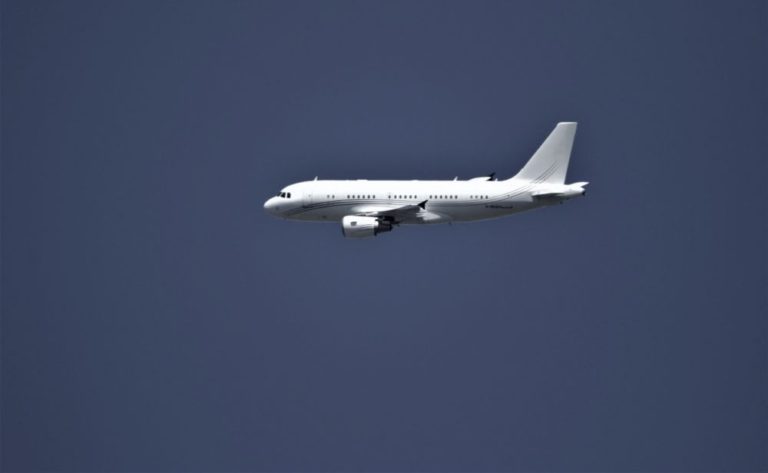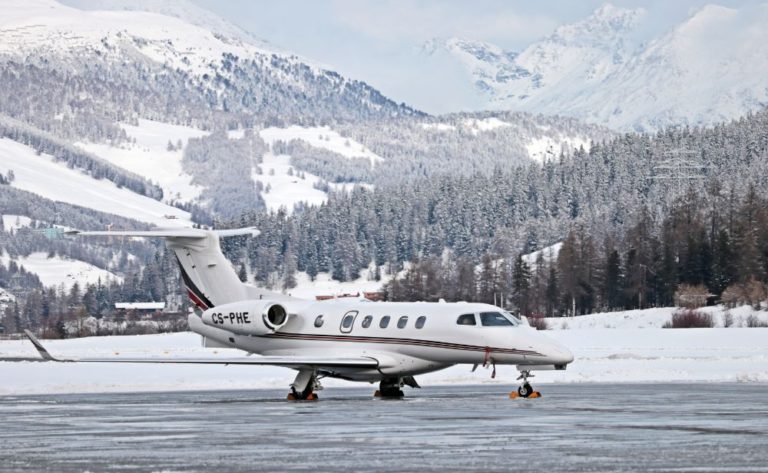Bombardier Challenger 350

Since it made its first flight on March 2, 2013, the Bombardier Challenger 350 has swiftly become one of the most popular selling business jets with corporate flight departments and charter operators who are looking for a mid-size cabin and coast-to-coast range. This is the case. It has a number of upgrades in comparison to its predecessor, the Challenger 300, which was already quite successful. These upgrades include an upgraded avionics suite, larger cabin capacity, and a slightly increased cargo, which can enable an even longer range. Bombardier is proud to say that the Challenger 350 has been the super mid-size business jet with the most deliveries for the past six years running thanks to these changes as well as additional interior enhancements that were implemented during the process of bringing the Challenger 350 to completion.
In the course of this airplane evaluation, we are going to take a comprehensive look at the Challenger 350, discussing its various aspects, such as its technical specifications, design possibilities, technological capabilities, investment costs, and more.
Taking a Quick Look at the Challenger 350
Maximum Range
• 3,200 nm / 5,926 km
Top Speed
• 0.83 Mach / 553 KTAs / 1024 km/h
• 0.80 Mach; 533 KTAs; 987 kilometres per hour; this is the typical cruise speed.
Maximum Altitude
• 45,000 ft / 13,716 m
Cabin Dimensions
Length
• 25 ft 2 in / 7.68 m Height
• 6 ft / 1.83 m
Exterior Dimensions
• Length: 68 feet, 8 inches or 20.9 metres
Wingspan
• 69 feet / 21 m
Height 20 feet / 6.1 m
Passengers
Up to 10
Layout of the Cockpit
The flight deck of the Bombardier Challenger 350 comes equipped with advanced technology, including the Rockwell Collis Pro Line 21 Advanced avionics suite, which is shown across four enormous displays in the aircraft’s cockpit. Even while the Challenger 350 does not have a head-up display available as an option, it does show the flight path vector on the primary flight display, which helps boost the pilot’s awareness of the surrounding environment. The fly-by-wire system, integrated flight information, synthetic vision, and the MultiScan weather radar are some of the other systems. The cockpit of the Challenger 350 has been created with the comfort of its pilots in mind, and as a result, it provides a generous amount of leg room as well as overall space.
Cabin Design
The Bombardier Challenger 350 is available in a variety of individualised configurations and adjustable seating arrangements, and it has the capacity to accommodate up to ten passengers in a most comfortable manner. In the interest of clarity, we will refer to the conventional two-row, four-person club seating layout throughout this evaluation.
The interior design proportions of the Challenger 350 are regarded as being quite pleasant when compared to those of other super mid-size aircraft. This has contributed to the aircraft’s popularity in the markets for privately owned aircraft as well as charter aircraft. When you enter the aircraft, you will have to pass through a well-equipped galley. The galley is often lined with a dark wood veneer, and the worktops are typically made of polished stone. The ample-sized work area in the galley is equipped with a microwave, an ice drawer that drains, as well as an optional sink and faucet. A soundproof pocket door can be used to seal off the kitchen from the rest of the main cabin, giving you additional privacy in the space.
It is highly likely that passengers will be aware of how quiet the main cabin of the Challenger 350 is as a result of its sound-suppressing design. This design features a number of noise reduction tactics, one of which is the inclusion of a standard acoustic curtain at the entry door. Bombardier claims that the Challenger 350 is between 4 and 5 decibels (dB) quieter than its predecessor, the Challenger 300 series.
With this particular floor plan, the cabin seating does provide comfortable individual seating through the use of the Challenger 350’s eight executive-style seats, which are equipped with the ability to swivel through 180 degrees, track, recline, and berth. These seats are arranged in a double-club configuration.
As an alternative to the double-club arrangement, Bombardier also provides a floor design that features a three-place divan (with berthing capabilities) opposite two (2) single-facing executive chairs. This layout can be found in the business class section. The main cabin side ledges contain smaller compartments for additional storage and concealed tables that can easily be extended at each executive seating arrangement. These features are present regardless of the layout chosen for the main cabin.
In the rear of the aircraft, passengers will find a restroom equipped with a large backlit mirror and vanity, sink, and faucet. There is also a baggage compartment that is 106 cubic feet in size and can be accessed from the main cabin at any time during the flight, if that is something the passenger wishes to do.
Technology
The Bombardier Challenger 350 does, in fact, come equipped with cutting-edge cabin management and in-flight entertainment systems. These systems include high-definition forward and aft bulkhead monitors measuring a standard 22 inches in size, as well as plug-and-play entertainment systems that come equipped with universal HDMI and USB ports.
Passengers are now able to stay connected while they are on the move thanks to the introduction of a 5G ATG option internet, which is now available in the domestic market. This gives passengers the opportunity to complete important work or simply enjoy their preferred music, movies, and television shows. Because the cabin management system of the Challenger 350 incorporates wireless controls for the cabin environment and entertainment, passengers are able to simply modify the settings of the cabin from the convenience of their own personal device.
Design of the Exterior The exterior design of the Challenger 350 is comparable to that of the Challenger 300, with a few small modifications here and there. The design improvements that have been included into the Challenger 350 are focused on the engines and the internal wing structure. This has resulted in an increase in the maximum takeoff weight, as well as a modest increase in the maximum range and engine thrust.
Acquisition Cost
The Challenger 350 first went into service in 2013, and the aircraft is still in full production to this day; nevertheless, the costs of acquiring a particular pre-owned aircraft vary greatly depending on its age, specs, and, of course, its overall condition.
At this point, a sizeable number of previously owned aircraft have racked up several thousand hours of flight time (with some of them being ready for new paint and refurbishment), and the pre-owned market is rounded out by more recently delivered aircraft or models that have seen less use. Buyers who are interested can also order a new 350 from Bombardier, which gives them the ability to choose their own bespoke paint schemes and finishes for the aircraft. In general, the reported current list pricing for a new Challenger 350 are in the mid-twenty thousand dollar range; however, early model pre-owned 350s may be found for sale in the middle to lower tens of thousands of dollars.
Expenses That Don’t Change
Note that all of the mentioned fixed costs are only estimates; the real costs will vary depending on factors like as the expertise and qualifications of the crew, the location of the hangar, the required level of insurance coverage, and so on.
Crew
• An annual cost of around $564,200 (includes Flight Attendant)
Training of the Crew
• An average of $90,000 per year for the hangar
• Roughly 66,000 dollars per year in insurance premiums
• Variable Costs Amounting to Approximately $69,560 Per Year
• Total Annual Fixed Costs Amounting to Approximately 158,879 Dollars
• An annual cost of around $983,239
Are You the Kind of Person Who Should Drive a Challenger 350?
When searching for a business aircraft, it is essential to look for a model that not only performs at a level that is adequate for your specific travel needs, but also provides all of the requirements and amenities that are necessary for you to travel in the comfort and style that you like.
It has been demonstrated that the Challenge 350 is superior in terms of its ability to provide non-stop service between any two cities in the United States while also operating at a high relative efficiency. In addition to being a super mid-size aircraft, it provides passengers with an extraordinarily luxurious interior that also has office-in-the-sky technology capabilities. If, on the other hand, your travel requirements necessitate a longer non-stop range, passenger capabilities, or cargo, Bombardier provides larger models with increased cabin size and performance, such as the Challenger 650 or its Global series aircraft.
The Step-by-Step Guide to Purchasing a Bombardier Challenger 350
Are you ready to move on to the next step in the process of further examining the Challenger 350? At each and every phase of the appraisal and acquisition process, Essex Aviation Group is available to lend a helping hand by providing specialised services. Our group of consultants has a combined one hundred years of experience in the aviation industry, which enables them to bring an unmatched level of expertise and professionalism to the table.





